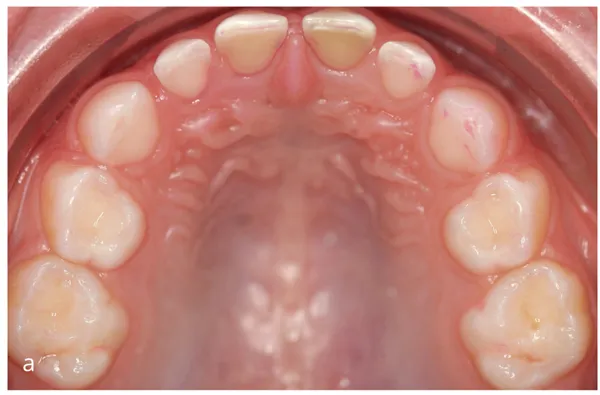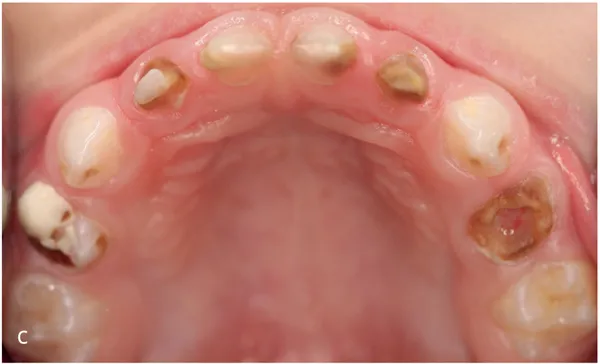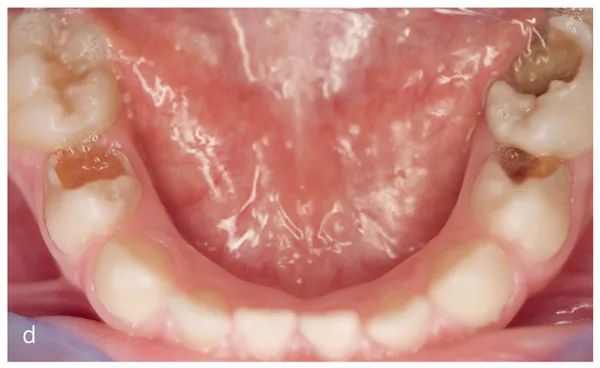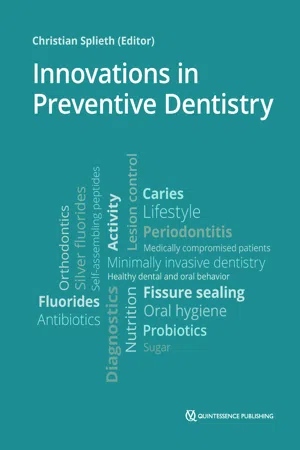
Innovations in Preventive Dentistry
Christian Splieth, Christian Splieth
- 220 páginas
- English
- ePUB (apto para móviles)
- Disponible en iOS y Android
Innovations in Preventive Dentistry
Christian Splieth, Christian Splieth
Información del libro
Prevention is better than healing... or treatment. Thus, preventive dentistry is a cross-sectional challenge for all fields in dentistry, and one that has already achieved great success, as shown by the caries decline in many countries. The walls between prevention and treatment have recently fallen in caries and periodontal disease, as well as in orthodontics, where guidance of function and space maintenance are a combination of prevention and treatment.This book discusses new developments and innovations in preventive dentistry, from primary "real" prevention to secondary prevention by inactivating initial lesions, and on to tertiary prevention to avoid subsequent progression andcomplications of manifest oral disease. This evidence base is then translated into clinical dental practice.The book addresses everyone interested or involved in dentistry, including students, the whole dental practice team, educators, health scientists, and policy makers, who want to gain insight into these up-to-date clinical practices and future developments. It intends to make an impact on teaching and all fields of clinical dentistry – not by giving cookbook recipes, but by pointing out the rationale behind the changes in our routines.Presented by an international group of recognized specialists in their fields, the topics include the new understanding and management of caries and periodontal disease, prevention of orthodontic problems, diagnostic approaches, the role of diet and according recommendations for oral health, routes to better oral hygiene, changes in oral disease patterns and their consequences, non- and minimally invasive caries treatment, current fluoride guidelines including the use of silver fluorides, risk management, a common risk-factor approach, facilitating behavior changes, sealants, and probiotics. This broad spectrum is elucidated for the most relevant dental problems from early childhood to seniors to implement preventively oriented dental practice.
Preguntas frecuentes
Información
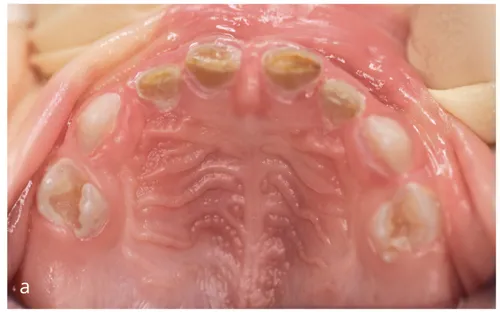
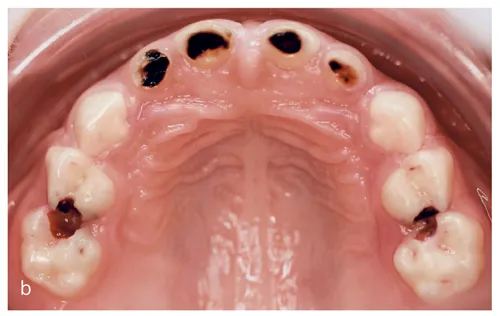
- Caries prevalence has reduced from ten or more affected permanent teeth in adolescents during the 1970s to a mean of less than one decayed, missing, or filled teeth (DMFT) in 12-year-olds nowadays.4
- About 90% of the caries burden can be prevented and tooth loss is almost eradicated in the permanent dentition in adolescents.2,4
- After the caries decline, 80% of the adolescents are caries-free on a DMFT level and this is not much changed by lowering the threshold to initial caries lesions.3
- Thus, the caries distribution is polarized and a so-called high-risk group of about 20% exhibits almost the complete caries burden.2,4
- The high-risk group is primarily associated with a low socioeconomic status that leads to less sufficient oral hygiene, fluoride exposure, and often more frequent sugar intake.2,5
- In the primary dentition and especially for early childhood caries, the situation is far from satisfactory in many countries.6 In spite of a less pronounced caries decline in the primary dentition, caries patterns and distribution are equivalent to the situation in adolescents.7 This is also true for caries in adults.2 Most likely a further caries decline will also increase the polarization in adults.
- Due to the caries distribution after a major caries decline, primary caries prevention needs a dual strategy of maintaining the high levels of oral health in the majority of the population and trying to find intensified measures to improve the situation in the risk group mostly characterized by a low socioeconomic status.3
- There is a realistic perspective that caries levels even in risk groups can be significantly reduced in the future, as the caries decline in this group was proportional to the reductions in the whole population, at least in German adolescents.4


